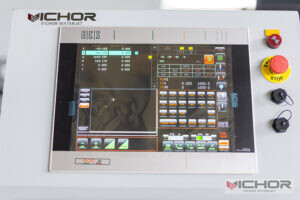
How Abrasive Water Jet Machining Works: Unveiling the Core Principles
In the world of precision manufacturing, where materials range from soft rubber to hardened titanium, one technology stands out for its versatility and power: Abrasive Water Jet Machining (AWJM). It is a process that harnesses the relentless force of nature—water—and combines it with the cutting power of abrasive particles to slice through virtually any material with astonishing precision. But what are the fundamental principles of abrasive water jet machining that make this possible? This article delves deep into the mechanics, components, and science behind this innovative cold-cutting technology, providing a comprehensive understanding of its operation and the common challenges faced in its application.
The Fundamental Mechanism: How Abrasive Water Jet Machining Operates
At its core, the principles of abrasive water jet machining revolve around one simple concept: erosion. The process transforms a stream of high-pressure water into a potent cutting tool by accelerating a stream of abrasive particles to extremely high velocities. The journey begins with a high-pressure pump that intensifies water pressure to an astounding 60,000 to 90,000 Pounds per Square Inch (PSI) or even higher. This ultra-high-pressure water is then forced through a small orifice, typically made of sapphire or diamond, creating a coherent, high-speed water jet.
This pure water jet, while powerful, lacks the cutting force for hard materials. This is where the key differentiator of AWJM comes into play. The high-speed water jet is directed into a mixing chamber, known as the abrasive head. Here, a vacuum effect draws abrasive garnet particles from a separate line into the chamber. The water jet then mixes with and accelerates these abrasive particles. This abrasive-laden slurry subsequently exits the machine through a focused tube, called the focusing tube or nozzle. The result is a concentrated, supersonic stream that bombards the workpiece, mechanically eroding material particle by particle to create a precise kerf (cut). This synergistic combination of water and abrasive is the cornerstone of the principles of abrasive water jet machining.
Deconstructing the System: Key Components and Their Roles
Understanding the principles of abrasive water jet machining requires a look at the key components that make up the system. Each part plays a critical role in the transformation from ordinary water to an industrial-grade cutting tool.
High-Pressure Pump: The heart of the system. It is either an intensifier pump, which uses hydraulic pressure to amplify water pressure, or a direct-drive pump. The intensifier type is more common for high-power applications, generating the immense pressure required.
Abrasive Delivery System: This consists of a hopper that stores the abrasive material (most commonly garnet), a metering device to control the flow rate, and a delivery line that feeds the abrasive into the mixing chamber via the Venturi effect.
Cutting Head: This is where the magic happens. It contains two crucial parts:
Orifice: Made from an ultra-hard material like sapphire or diamond, it forms the initial high-velocity water jet. Its small diameter (typically 0.1 to 0.3 mm) is critical for jet coherence.
Mixing Tube and Focusing Nozzle: This is typically a composite part with a carbide insert. It is where the water and abrasives mix and get focused into a coherent, high-energy stream. The diameter of the mixing tube is larger than the orifice and determines the final jet diameter.
CNC Motion System: To achieve precise cuts and complex shapes, the cutting head is mounted on a computer numerically controlled (CNC) gantry or robot. This allows for automated, high-precision movement along the X, Y, and Z axes.
Catcher Tank: Located beneath the workpiece, this tank serves to dissipate the immense residual energy of the jet after it has passed through the material, reducing noise and containing the spent water and abrasives.
The Physics at Play: Energy Transfer and Material Removal
The underlying physics is a critical aspect of the principles of abrasive water jet machining. The process is purely mechanical and does not involve heat, which is its most significant advantage over laser or plasma cutting. The material removal mechanism can be broken down into two primary phases.
First, the initial impact of the high-speed abrasive particles creates micro-fractures and plastic deformation on the workpiece surface. This is the deformation wear phase. Second, as the jet progresses, the continuous stream of particles impacts the material at shallow angles, leading to a grinding or erosion wear effect that plucks out small fragments of material. The kinetic energy of each abrasive particle is transferred to the workpiece upon impact, and this energy is sufficient to overcome the material’s strength and fracture its bonds.
The efficiency of this process depends on several factors, including the hardness, size, and flow rate of the abrasive particles, the pressure and velocity of the water jet, and the traverse speed of the cutting head across the material. A slower traverse speed results in a deeper cut but a wider kerf, while a faster speed produces a shallower, narrower cut. This balance is central to the practical application of the principles of abrasive water jet machining.
Advantages Rooted in the Core Principles
The unique principles of abrasive water jet machining confer a set of distinct advantages that make it indispensable in modern manufacturing.
No Heat-Affected Zone (HAZ): Since the process is kinetic and not thermal, it does not generate heat that can alter the material’s metallurgical properties, create hardening, or induce thermal stress. This is crucial for materials like tool steels and titanium.
Omni-directional Cutting: The jet can cut in any direction, allowing for extremely complex and intricate shapes, sharp corners, and fine details that are challenging for other cutting methods.
Material Versatility: It can cut almost any material—metals, composites, stone, glass, ceramics, rubber, and plastics—without changing the tool.
Environmentally Friendly: The process produces no hazardous fumes or gases. The used abrasive and water slurry is the primary waste, which can often be recycled or disposed of responsibly.
Minimal Mechanical Stress: The force exerted by the jet is very localized, putting minimal structural stress on the part, which is beneficial for machining delicate or thin materials.
Despite its many strengths, a complete understanding of the principles of abrasive water jet machining must include its limitations and common operational problems.
Taper and Kerf Variation: One of the most common issues is the creation of a tapered kerf, where the cut is wider at the top than at the bottom. This occurs because the jet loses energy and diverges as it travels through the material. Using specialized nozzle designs or dynamic head tilting can help mitigate this.
Abrasive Consumption and Cost: The continuous consumption of abrasive garnet constitutes a significant operational cost. Inconsistent abrasive flow can also lead to variations in cut quality.
Nozzle Wear: Both the orifice and the mixing tube are subject to wear from the high-velocity, abrasive-laden stream. This wear changes the jet’s characteristics over time, leading to a loss of precision and cut quality, necessitating regular and costly part replacement.
Surface Finish and Striations: The cut surface often exhibits striations, or wavy patterns, especially in the lower portion of the cut. While the top part of the cut is usually smooth, these striations can affect the surface finish and may require secondary processing if a smooth finish is critical.
Limited Cutting Speed for Thick Materials: While excellent for a vast range of thicknesses, the cutting speed for very thick, hard materials can be slower compared to some thermal processes. The energy dissipation through the material depth is a limiting factor.
Noise and Safety Concerns: The operation generates significant noise, primarily from the pump and the jet impacting the catcher tank. Proper enclosures and hearing protection for operators are mandatory.
In conclusion, the principles of abrasive water jet machining represent a harmonious blend of fluid dynamics and mechanical erosion. By understanding the journey from ultra-high-pressure water to a focused, abrasive-charged cutting stream, one can fully appreciate its capabilities and limitations. From its unparalleled versatility and cold-cutting nature to the challenges of taper and nozzle wear, AWJM remains a powerful, unique, and evolving technology. Its ability to cut without compromise across the material spectrum ensures its continued vital role in pushing the boundaries of modern manufacturing and design.
continue reading
Related Posts
- 1666 words8.4 min read


